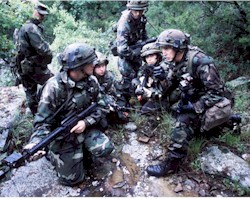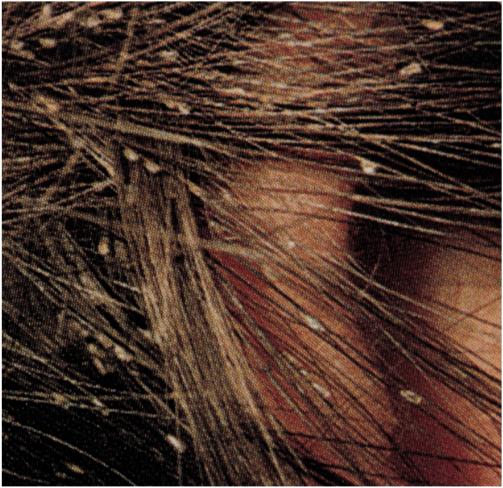Lice (head or crab)
|
Use Kwell, Nix or Rid shampoos, or similar products. Adequate pre-cleaning followed by adequate medication contact time is the key. The hair should be routinely shampooed clean and toweled dry (i.e. moist but not dripping wet) before the application of the pediculocide shampoo. The pediculocide shampoo should
be directly applied from the bottle onto the affected areas and worked
into lather without the addition of water. Kwell shampoo should have
at least 4-5 minutes and other products about 10 minutes of contact
time before rinsing off with water. Retreat one week later.
Treatment failure is not due to resistant lice. The pediculocides
available today do not kill nits as well as they kill live lice.
Treatment failure is most frequently due to reinfestation or
inadequate contact time. If treating the scalp, be sure to
treat behind the ears and the base of the neck. It is very easy to
inadequately treat patients with long hair. Longer haired patients
should use a plastic shower cap to insure coverage. Avoid the eyes. Nits can be removed with a nit
comb or picked off with tweezers (see figure 8). Rinsing the hair
with a 2:1 dilution of table vinegar before combing will help loosen
the nits. Combs and brushes should be soaked in the pediculocide
shampoo for about an hour or heated to about 65 degrees Celsius for
5-10 minutes. The treatment of crab lice should
not just involve the pubic hair. It should also cover the hairy skin
from the umbilicus down to mid thigh. In particularly hairy
individuals, check the axilla and chest for involvement. Lice on the eyelashes can be treated by
thickly applying Vaseline 2-3 times a day for a week. This treatment
smothers the lice. Ammoniated Mercury ointment 0.1% applied to the
lids is also quite effective. The nits can then be mechanically
removed. |
Written and revised by CAPT Dennis A. Vidmar, MC, USN, Department of Military and Emergency Medicine, and Department of Dermatology, Uniformed Services University of the Health Sciences, Bethesda, MD (1999). Additional images provided by CAPT Vidmar in June, 2000, subsequent to the initial publication of this manual. |
Preface · Administrative Section · Clinical Section
The
General Medical Officer Manual , NAVMEDPUB 5134, January 1, 2000
Bureau
of Medicine and Surgery, Department of the Navy, 2300 E Street NW, Washington, D.C.,
20372-5300
This web version of The General Medical Officer Manual, NAVMEDPUB 5134 is provided by The Brookside Associates Medical Education Division. It contains original contents from the official US Navy version, but has been reformatted for web access and includes advertising and links that were not present in the original version. This web version has not been approved by the Department of the Navy or the Department of Defense. The presence of any advertising on these pages does not constitute an endorsement of that product or service by either the Department of Defense or the Brookside Associates. The Brookside Associates is a private organization, not affiliated with the United States Department of Defense. All material in this version is unclassified. This formatting © 2006 Medical Education Division, Brookside Associates, Ltd. All rights reserved.
Home · Textbooks and Manuals · Videos · Lectures · Distance Learning · Training · Operational Safety · Search
|
|
|
This website is dedicated to the development and dissemination of medical information that may be useful to those who practice Operational Medicine. This website is privately-held and not connected to any governmental agency. The views expressed here are those of the authors, and unless otherwise noted, do not necessarily reflect the views of
the Brookside Associates, Ltd., any governmental or private organizations. All writings, discussions, and publications on this website are unclassified.
© 2006 Medical Education Division, Brookside Associates, Ltd. All rights reserved
Other Brookside Products

